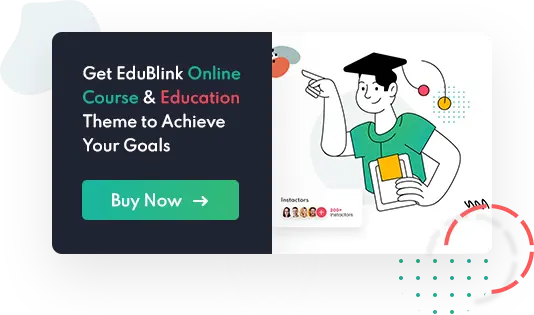

Economics
Economics relates to , Finance & Accounting
Macroeconomics Course
Economic Growth and Development
Examine diverse theories of economic development, such as the modernization theory, the dependency theory, and structuralist approaches. <br> Understand the factors influencing economic growth, such as capital accumulation, technological advancement, and human capital development. <br> Analyze the influence of government policies, foreign aid, and international trade on the economic development of various regions.
- 15 Lessons
- 20 Students
Examine the structures and functions of financial markets, including stock markets, bond markets, and money markets. <br> Learn about risk-return tradeoffs, asset pricing models, and how macroeconomic factors affect the performance of financial markets. <br> Examine the function of various financial instruments such as stocks, bonds, and derivatives in portfolio management.
- 12 Lessons
- 20 Students
Macroeconomics of Financial Markets
Examine the structures and functions of financial markets, including stock markets, bond markets, and money markets. <br> Learn about risk-return tradeoffs, asset pricing models, and how macroeconomic factors affect the performance of financial markets. <br> Examine the function of various financial instruments such as stocks, bonds, and derivatives in portfolio management.
- 12 Lessons
- 20 Students
Develop skills to assess fiscal and monetary policies' ability to achieve macroeconomic goals, including stable inflation and full employment. <br> Examine how governments and central banks implement macroeconomic policies, such as fiscal stimulus and interest rate adjustments. <br> Assess how policy changes affect GDP, unemployment, and inflation in the short and long run.
- 13 Lessons
- 20 Students
Macroeconomic Policy Analysis
Develop skills to assess fiscal and monetary policies' ability to achieve macroeconomic goals, including stable inflation and full employment. <br> Examine how governments and central banks implement macroeconomic policies, such as fiscal stimulus and interest rate adjustments. <br> Assess how policy changes affect GDP, unemployment, and inflation in the short and long run.
- 13 Lessons
- 20 Students
Global Economic Issues
Analyze the advantages and disadvantages of international trade, trade agreements, and their impact on economic growth and income distribution. <br> Examine the roles played by international organizations such as the IMF, the World Bank, and the WTO in addressing global economic issues. <br> Examine recent financial crises and Eurozone crises and their impact on international economic stability.
- 15 Lessons
- 20 Students
Learn about how the government affects the economy, public goods, taxes, and government spending. <b> Examine the economic effects of public policies, such as those pertaining to healthcare, education, and the environment. <br> Develop your abilities in public debt management, fiscal policy analysis, and budgetary analysis.
- 13 Lessons
- 20 Students
Macroeconomics and Public Policy
Learn about how the government affects the economy, public goods, taxes, and government spending. <b> Examine the economic effects of public policies, such as those pertaining to healthcare, education, and the environment. <br> Develop your abilities in public debt management, fiscal policy analysis, and budgetary analysis.
- 13 Lessons
- 20 Students
Understand economic data sources and how to compile, validate, and cleanse data for analysis. <br> Learn statistical methods and software applications for analyzing economic data, including the testing of hypotheses and regression analysis. <br> Develop skills in data visualization to effectively convey economic trends and insights through charts and graphs.
- 13 Lessons
- 20 Students
Economic Data Analysis
Understand economic data sources and how to compile, validate, and cleanse data for analysis. <br> Learn statistical methods and software applications for analyzing economic data, including the testing of hypotheses and regression analysis. <br> Develop skills in data visualization to effectively convey economic trends and insights through charts and graphs.
- 13 Lessons
- 20 Students
Develop expertise in analyzing economic data, including time series data, to recognize trends and patterns. <br> Learn various forecasting techniques, such as regression analysis and time series models, in order to create accurate economic forecasts. <br> Understand the role that leading, lagging, and coincident economic indicators play in predicting economic performance.
- 15 Lessons
- 20 Students
Macroeconomic Forecasting
Develop expertise in analyzing economic data, including time series data, to recognize trends and patterns. <br> Learn various forecasting techniques, such as regression analysis and time series models, in order to create accurate economic forecasts. <br> Understand the role that leading, lagging, and coincident economic indicators play in predicting economic performance.
- 15 Lessons
- 20 Students
Analyze economic scenarios by constructing and interpreting macroeconomic models, such as IS-LM, AD-AS, and DSGE models. <br> Utilize models to simulate the effects of policy changes, disruptions, and economic scenarios on important macroeconomic variables. <br> Learn how to calibrate models with data from the real world and validate their ability to depict economic dynamics accurately.
- 13 Lessons
- 20 Students
Macroeconomic Modeling
Analyze economic scenarios by constructing and interpreting macroeconomic models, such as IS-LM, AD-AS, and DSGE models. <br> Utilize models to simulate the effects of policy changes, disruptions, and economic scenarios on important macroeconomic variables. <br> Learn how to calibrate models with data from the real world and validate their ability to depict economic dynamics accurately.
- 13 Lessons
- 20 Students
Examine the causes and catalysts of financial crises, such as banking, currency, and debt. <br> Analyze government and international organization's policy responses and crisis management strategies. <br> Examine preventative measures for financial crises, such as financial regulation, supervision, and risk management procedures.
- 16 Lessons
- 20 Students
Macroeconomics and Financial Crises
Examine the causes and catalysts of financial crises, such as banking, currency, and debt. <br> Analyze government and international organization's policy responses and crisis management strategies. <br> Examine preventative measures for financial crises, such as financial regulation, supervision, and risk management procedures.
- 16 Lessons
- 20 Students
Understand the distinct economic dynamics and challenges that developing market economies encounter. <br> Analyze emerging market investment climate, foreign direct investment (FDI), and capital flows. <br> Investigate solutions for economic diversification, sustainable development, and vulnerability reduction in emerging markets.
- 19 Lessons
- 20 Students
Macroeconomics of Emerging Markets
Understand the distinct economic dynamics and challenges that developing market economies encounter. <br> Analyze emerging market investment climate, foreign direct investment (FDI), and capital flows. <br> Investigate solutions for economic diversification, sustainable development, and vulnerability reduction in emerging markets.
- 19 Lessons
- 20 Students
Microeconomics Course
Understand how businesses optimize manufacturing processes, such as cost reduction and resource allocation. <br> Investigate topics such as productive efficiency and allocative efficiency and its implications for market outcomes. <br> Learn about long-run equilibrium and the requirements for economic efficiency in fully competitive markets.
- 13 Lessons
- 20 Students
Production and Efficiency
Understand how businesses optimize manufacturing processes, such as cost reduction and resource allocation. <br> Investigate topics such as productive efficiency and allocative efficiency and its implications for market outcomes. <br> Learn about long-run equilibrium and the requirements for economic efficiency in fully competitive markets.
- 13 Lessons
- 20 Students
Comprehend the characteristics of perfectly competitive markets and their contribution to economic efficiency. <br> Analyze the short- and long-term equilibrium conditions for firms that are perfectly competitive. <br> Learn how supply and demand dynamics lead to market equilibrium in a competitive environment.
- 13 Lessons
- 20 Students
Perfect Competition and Efficiency
Comprehend the characteristics of perfectly competitive markets and their contribution to economic efficiency. <br> Analyze the short- and long-term equilibrium conditions for firms that are perfectly competitive. <br> Learn how supply and demand dynamics lead to market equilibrium in a competitive environment.
- 13 Lessons
- 20 Students
Examine the behavior of firms in oligopolistic markets, including interdependencies in pricing and strategic interactions. <br> Examine various game theory strategies, such as collusion, price leadership, and the prisoner's dilemma. <br> Analyze the dynamics of oligopoly market competition, cooperation, and strategic decision-making.
- 12 Lessons
- 20 Students
Oligopoly and Game Theory Strategies
Examine the behavior of firms in oligopolistic markets, including interdependencies in pricing and strategic interactions. <br> Examine various game theory strategies, such as collusion, price leadership, and the prisoner's dilemma. <br> Analyze the dynamics of oligopoly market competition, cooperation, and strategic decision-making.
- 12 Lessons
- 20 Students
Examine the dynamics of the labor market, including the factors influencing labor supply and demand. <br> Examine the factors, including labor market competition and bargaining power, that influence wage determination. <br> Study the concept of human capital and its impact on wage disparities.
- 15 Lessons
- 20 Students
Labor Markets and Wage Determination
Examine the dynamics of the labor market, including the factors influencing labor supply and demand. <br> Examine the factors, including labor market competition and bargaining power, that influence wage determination. <br> Study the concept of human capital and its impact on wage disparities.
- 15 Lessons
- 20 Students
Examine the behavior of monopolistic companies, such as their pricing strategies and output decisions. <br> Examine the various forms of price discrimination and how businesses use them to maximize profits. <br> Assess the impact of government regulation of monopolies on consumer welfare.
- 15 Lessons
- 20 Students
Monopoly and Price Discrimination
Examine the behavior of monopolistic companies, such as their pricing strategies and output decisions. <br> Examine the various forms of price discrimination and how businesses use them to maximize profits. <br> Assess the impact of government regulation of monopolies on consumer welfare.
- 15 Lessons
- 20 Students
Examine patterns of income distribution, factors that contribute to income inequality, and measurement techniques. <br> Examine government policies, such as progressive taxation and social programs, that seek to reduce income inequality. <br> Evaluate the effect of redistribution of income on economic and societal well-being.
- 12 Lessons
- 20 Students
Income Inequality and Redistribution
Examine patterns of income distribution, factors that contribute to income inequality, and measurement techniques. <br> Examine government policies, such as progressive taxation and social programs, that seek to reduce income inequality. <br> Evaluate the effect of redistribution of income on economic and societal well-being.
- 12 Lessons
- 20 Students
Understand information economics, especially adverse selection and moral hazard. <br> Research how asymmetric information contributes to market failures and inefficiencies. <br> To alleviate information difficulties, learn about information remedies such as signaling, screening, and contract design.
- 13 Lessons
- 20 Students
Economics of Information and Asymmetric Information
Understand information economics, especially adverse selection and moral hazard. <br> Research how asymmetric information contributes to market failures and inefficiencies. <br> To alleviate information difficulties, learn about information remedies such as signaling, screening, and contract design.
- 13 Lessons
- 20 Students
Examine the impact of externalities on environmental problems, pollution, and resource depletion. <br> Consider economic solutions such as Pigouvian taxes, cap-and-trade systems, and environmental policy tools. <br> Examine economic strategies for attaining sustainability and striking a balance between economic expansion and environmental protection.
- 15 Lessons
- 20 Students
Environmental Economics
Examine the impact of externalities on environmental problems, pollution, and resource depletion. <br> Consider economic solutions such as Pigouvian taxes, cap-and-trade systems, and environmental policy tools. <br> Examine economic strategies for attaining sustainability and striking a balance between economic expansion and environmental protection.
- 15 Lessons
- 20 Students
Understand the impact of various healthcare systems on healthcare access, including public and private healthcare. <br> Investigate health insurance economics, adverse selection, and the role of insurance in healthcare markets. <br> Examine healthcare policies, cost-effectiveness, and the implications for healthcare delivery.
- 19 Lessons
- 20 Students
Health Economics and Healthcare Markets
Understand the impact of various healthcare systems on healthcare access, including public and private healthcare. <br> Investigate health insurance economics, adverse selection, and the role of insurance in healthcare markets. <br> Examine healthcare policies, cost-effectiveness, and the implications for healthcare delivery.
- 19 Lessons
- 20 Students
Finance Fundamentals Course
Learn to interpret financial statements, such as balance sheets, income statements, and cash flow statements. <br> Examine the use of financial ratios to evaluate the liquidity, profitability, and solvency of a company. <br> Develop the ability to assess a company's financial health and performance, which will assist you in making investment or lending decisions.
- 13 Lessons
- 20 Students
Financial Statement Analysis
Learn to interpret financial statements, such as balance sheets, income statements, and cash flow statements. <br> Examine the use of financial ratios to evaluate the liquidity, profitability, and solvency of a company. <br> Develop the ability to assess a company's financial health and performance, which will assist you in making investment or lending decisions.
- 13 Lessons
- 20 Students
Comprehend the fundamentals of double-entry accounting, including debits and credits. <br> Learn how to accurately document financial transactions, laying the groundwork for financial reporting. <br> Develop expertise in preparing financial statements, such as trial balances and income statements.
- 12 Lessons
- 20 Students
Principles of Accounting
Comprehend the fundamentals of double-entry accounting, including debits and credits. <br> Learn how to accurately document financial transactions, laying the groundwork for financial reporting. <br> Develop expertise in preparing financial statements, such as trial balances and income statements.
- 12 Lessons
- 20 Students
Examine key tax concepts, such as taxable income, deductions, and tax credits. <br> Learn how to calculate and file taxes for individuals and businesses in accordance with applicable tax regulations. <br> Develop tax planning strategies in order to minimize tax obligations and maximize financial outcomes.
- 10 Lessons
- 20 Students
Taxation Basics
Examine key tax concepts, such as taxable income, deductions, and tax credits. <br> Learn how to calculate and file taxes for individuals and businesses in accordance with applicable tax regulations. <br> Develop tax planning strategies in order to minimize tax obligations and maximize financial outcomes.
- 10 Lessons
- 20 Students
Acquire knowledge of banking services, including savings accounts, loans, and online banking. <br> Comprehend the various financial products offered by banks and their suitability for achieving a variety of financial objectives. <br> Examine the regulatory structure that governs monetary institutions and banks.
- 12 Lessons
- 20 Students
Banking and Financial Services
Acquire knowledge of banking services, including savings accounts, loans, and online banking. <br> Comprehend the various financial products offered by banks and their suitability for achieving a variety of financial objectives. <br> Examine the regulatory structure that governs monetary institutions and banks.
- 12 Lessons
- 20 Students
Learn about credit scores, their significance, and ways to improve or maintain a decent credit rating. <br> Understand responsible financing practices and debt consolidation options. <br> For financial stability, investigate credit counseling resources and debt repayment strategies.
- 10 Lessons
- 20 Students
Credit Management and Debt
Learn about credit scores, their significance, and ways to improve or maintain a decent credit rating. <br> Understand responsible financing practices and debt consolidation options. <br> For financial stability, investigate credit counseling resources and debt repayment strategies.
- 10 Lessons
- 20 Students
Master Excel's essential tools and functions, including formulas and data analysis, for financial modeling. <br> Learn how to generate financial projections, construct financial models, and conduct sensitivity analysis. <b> Utilize financial models to facilitate decision-making processes, such as the evaluation of investment initiatives or business scenarios.
- 12 Lessons
- 20 Students
Financial Modeling with Excel
Master Excel's essential tools and functions, including formulas and data analysis, for financial modeling. <br> Learn how to generate financial projections, construct financial models, and conduct sensitivity analysis. <b> Utilize financial models to facilitate decision-making processes, such as the evaluation of investment initiatives or business scenarios.
- 12 Lessons
- 20 Students
Recognize the significance of establishing financial objectives and developing a personalized financial plan. <br> Learn budgeting techniques for effective expense management and increased savings. <br> As part of your financial strategy, you should investigate the fundamentals of investing, such as asset classes and risk assessment.
- 15 Lessons
- 20 Students
Introduction to Financial Planning
Recognize the significance of establishing financial objectives and developing a personalized financial plan. <br> Learn budgeting techniques for effective expense management and increased savings. <br> As part of your financial strategy, you should investigate the fundamentals of investing, such as asset classes and risk assessment.
- 15 Lessons
- 20 Students
Define retirement objectives and comprehend various retirement plans, including 401(k)s and IRAs. <br> Learn how to estimate your retirement income requirements and develop a savings plan. <br> Examine the significance of Social Security and other retirement benefits in planning for retirement.
- 15 Lessons
- 20 Students
Financial Planning for Retirement
Define retirement objectives and comprehend various retirement plans, including 401(k)s and IRAs. <br> Learn how to estimate your retirement income requirements and develop a savings plan. <br> Examine the significance of Social Security and other retirement benefits in planning for retirement.
- 15 Lessons
- 20 Students
Understand the impact of psychological factors on financial decision-making and investment behavior. <br> Examine the impact of prevalent behavioral biases, such as overconfidence and loss aversion, on financial decisions. <br> Assess your risk tolerance and devise investment strategies that align with your risk profile.
- 18 Lessons
- 20 Students
Behavioral Finance
Understand the impact of psychological factors on financial decision-making and investment behavior. <br> Examine the impact of prevalent behavioral biases, such as overconfidence and loss aversion, on financial decisions. <br> Assess your risk tolerance and devise investment strategies that align with your risk profile.
- 18 Lessons
- 20 Students




























